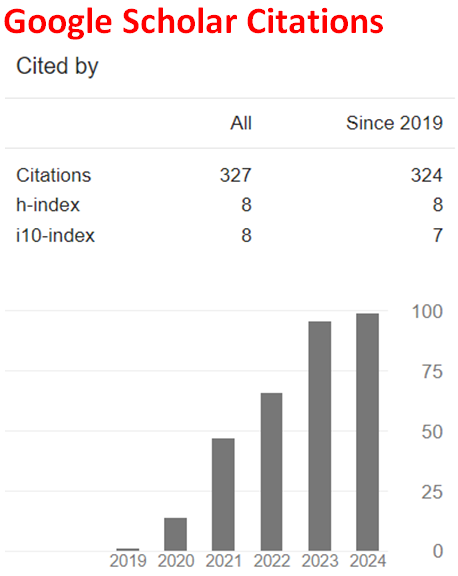On the Mechanism of the Caro Synthesis of Methylene Blue
Abstract
The recent interest for new applications of methylene blue as a promising drug for several important ailments prompted us to fill unknown aspects related to this compound. Since there is no mechanism on the Caro synthesis of methylene blue, we provide the electron flow, step by step, from the starting N,N-dimethylphenylenediamine to the dibenzothiazine derivative. It is a free radical generation system due to the oxidizing properties of ferric chloride. We pointed out the alternative reactions that take place with hydrogen sulphide, the reducer from which the thiazine ring is formed.
Downloads
References
Pioneering thinker ─ then and now: Methylene blue, BASF. Online access with the title. Last login, August 21, 2021. https://www.basf.com/global/en/media/magazine/archive/issue-4/pioneer-thinker-then-and-now-methlyene-blue.html
Methylene Blue ─ Existing Research and Chemical Potential, MITOLAB, November 23, 2017. https://mitolab.com/2017/11/methylene-blue-research/
F. Sánchez-Viesca and R. Gómez, On the chemistry of Sonnenschein test for strychnine, Am. J. Chem. 11(3) (2021), 49-51. https://doi.org/10.5923/j.chemistry.20211103.02
F. Sánchez-Viesca and R. Gómez, The chemistry of the Wellcome test for morphine, OAR J. Chem. & Pharm. 01(02) (2021), 001-004. https://doi.org/10.53022/oarjcp/2021.1.2.0025
F. Sánchez-Viesca and R. Gómez, The chemistry of Lindo and Fages colour tests, Earthline J. Chem. Sci. 5(1) (2021), 119-125. https://doi.org/10.34198/ejcs.5121.119125
F. Sánchez-Viesca and R. Gómez, Formation mechanism of the colored compounds derived from Eserine (Physostigmine), World J. Org. Chem. 8(1) (2020), 1-4. https://doi.org/10.12691/wjoc-8-1-1
F. Sánchez-Viesca and R. Gómez, The chemistry of Marchand’s test for strychnine identification, Magna Scientia Adv. Res. & Rev. 01(01) (2020), 018-022. https://doi.org/10.30574/msarr.2020.1.1.0020
P. Karrer, Organic Chemistry, 3rd ed., p. 610, Amsterdam: Elsevier, 1947.
J. H. White, Inorganic Chemistry, 2nd ed., p.382, London: University of London Press, 1964.
E. C. Scott and F. A. Kanda, The Nature of Atoms and Molecules, pp. 279, 501, New York: Harper & Row, 1965.
E. Fischer, Billdung von Methylenblau als Reaction auf Schwefelwasserstoff, Ber. Dtsch. Chem. Ges. 16 (1883), 2234-2236. https://doi.org/10.1002/cber.188301602138
E. Fischer, Formation du bleu de methylene comme moyen de reconnaitre l’hydrogène sulfuré, Bull. Soc. Chim. Paris 42(2) (1884), 348-349.
A. I. Cohn, Tests and Reagents, p. 43, New York: J. Wiley & Sons, 1903.
Public Health Reports, United States Public Health Service, 56(1) (April 4, 1941), 686, Washington: US Government Printing Office.
W. Authenrieth and W. H. Warren, Laboratory Manual for the Detection of Poisons and Powerful Drugs, Philadelphia: P. Blakiston’s Son, 1928.
I. T. Millar and H. D. Springall, A Shorter Sidgwick’s Organic Chemistry of Nitrogen, pp. 126-127, Oxford: Clarendon, 1967.
C. Reinhardt and A. S. Travis, Heinrich Caro and the Creation of Modern Chemical Industry, Netherlands: Springer, 2001. https://doi.org/10.1007/978-94-015-9353-3
N. A. Lange, Handbook of Chemistry, 10th ed., p. 352, New York: McGraw-Hill, 1961.
Molbase Encyclopedia, Murexide, Shangai, China, 2018.
K. L. Rinehart, Oxidation and Reduction of Organic Compounds, p. 88, Englewood Cliffs, N.J: Prentice-Hall, 1973.

This work is licensed under a Creative Commons Attribution 4.0 International License.


